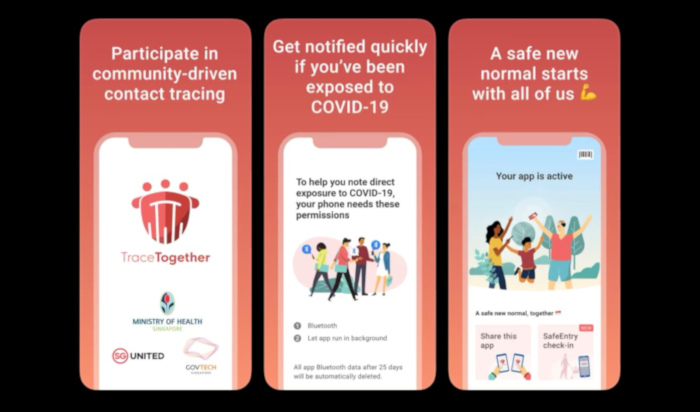
In March, MobiHealthNews reported that the Singapore government launched the mobile app TraceTogether to help support and supplement current contact tracing efforts in the nation-state in an effort to reduce the spread of COVID-19.
TraceTogether works by exchanging short-distance Bluetooth signals between phones to detect other participating TraceTogether users in close proximity. Records of such encounters are stored locally on each user’s phone.
According to a statement by the Smart Nation Office under the Prime Minister’s Office in Singapore, there are about 1.8 million people who have downloaded the TraceTogether app, but “it is not enough,” as the app does not currently cover the digitally excluded population including the elderly and young children who may not have smartphones.
Another issue is that the app does not work reliably on iOS devices and can pose a significant drain on battery life, which will deter those who are using Apple devices such as the iPhone from downloading the app.
With those considerations in mind, the Singapore government is expanding the TraceTogether Programme to include a stand-alone device called the TraceTogether Token. It will function in the same way the app does and uses Bluetooth signals to record other nearby TraceTogether devices.
Minister-in-charge of the Smart Nation initiative Vivian Balakrishnan said during a media briefing on 8 June that the first batch of these devices will be delivered in the later half of this month and will be progressively distributed to Singapore households.
In terms of privacy safeguards, the statement by the Smart Nation Office added that the TraceTogether Token has no GPS and has no Internet or cellular connectivity. The data cannot be pulled from the device unless the user physically hands in the device to Ministry of Health (MOH) contact tracers, if and when he/she is confirmed to be infected with COVID-19.
The statement also emphasized that all public sector data protection rules will apply to the data held by MOH, including abiding by the recommendations of the Public Sector Data Security Review Committee.
THE LARGER PICTURE
Singapore recently ended its circuit breaker period on 1 June, which is likened to a semi-lockdown measure taken by the government since early April in order to reduce the community spread of COVID-19. Post-circuit breaker, the nation-state is embarking on a three-phased approach to resume activities safely.
Phase One of this approach involves the safe reopening of economic activities that do not pose high risk of transmission. This includes the resumption of selected services, like motor vehicle and air-con servicing, all hairdressing services and selected health services.
At a press conference on 28 May, Minister Lawrence Wong, co-chair of the COVID-19 Multi-Ministry Taskforce, said, “If the community transmission – if infection rates over these two weeks remain low and stable – then we will decide by the middle of June on whether we want to take the next step to move to Phase 2; and that means Phase 2 could happen before the end of June.”
Singapore is continuing to build its capabilities in the areas of expanding its testing capacity for COVID-19, speeding up contact tracing (which explains the launch of the TraceTogether Token) and ensuring sufficient healthcare capacity as it prepares to progressively reopen economic activities.
As of 10 June, Singapore has a total number of 38,965 confirmed cases of COVID-19 and 25 related deaths.


















